Perceptual Mapping
perceptual maps A product positioning tool that uses mu hidimensional scaling of consumers' perceptions and preferences to portray the psychological distance between products and segments.
Perceptual maps are a valuable aid to product positioning. These maps use multidimensional scaling of perceptions and preferences that portray psychological distance between products and segments, using many dimensions. They contrast with conventional maps that use two dimensions to show the physical distance between objects. Physical and psychological maps of die same items can be quite different. Disneyland in California and Disney's Magic Kingdom in Florida are thousands of kilometres apart physically, but psychologically close together.
In their simplest form, perceptual maps use two dimensions. For example, Figure 10.3 shows the average -value /or money and accessibility rating of European holiday destinations.11 The perceptual map shows that France, Germany and the Netherlands, which are physically close together, are also psychologically close holiday destinations using these two criteria. In contrast,

- Th is a-iixrrcl-winning campaign attracted immense attention ■without offending women. Sales of Wondcrbra were reported to have more than doubled as a result.
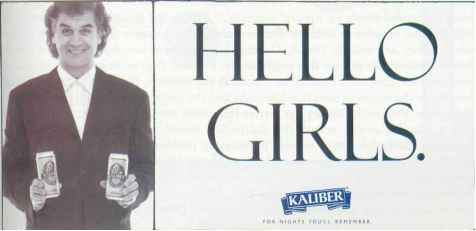
This poster ad promotes a distinct advantage of no-alcohol beer when meeting the girl in the Wondcrbra.
© Guinness Ltd. All righ ts reserved
This poster ad promotes a distinct advantage of no-alcohol beer when meeting the girl in the Wondcrbra.
© Guinness Ltd. All righ ts reserved
Spain and the United Kingdom are psychologically close together, but are physically distant. France i.s Europe's most popular holiday destination and this map partly shows why; it offers the best value for money among the accessible nations. The lack of destinations in the high value for money and easy access quadrant suggests a chsrches Ic creneau positioning opportunity for new destinations. Hungary and the Czech Republic could fill the hole in the market.
Of course, holiday makers have a more complicated view of destinations Chan the two-dimensional map suggests. And if the map had other dimensions, it would change: for instance, adding weather would certainly separate Spain and the United Kingdom. Multidimensional sealing produces maps that show many dimensions at the same time (Figure 10.4). To read these maps, trace baek the individual dimensions one at a time. For example, the perception is that Switzerland has good facilities; Germany and Sweden quite good ones; Denmark, the Netherlands and Norway average ones; and the United Kingdom, Spain and Ireland poor facilities. Finland has an extreme position on the map. Prospective travellers see its people &s friendly and hospitable, while the country is a unique and different place with wild areas, beautiful scenery and peace and quiet. More negatively, travellers do not perceive Finland as accessible, or as a place for entertainment, or as a cultural experience.
The perceptual map shows how holidaymakers segment, as well as the possible destinations. A, the largest segment, wants cheap, sunshine holidays and liked Spain. Segment C, who represented 15 per cent of the sample population,

Norway
Denmark
Austria
Norway
Denmark
Austria
Netherlands German1
Swltzorlan
Netherlands German1
Swltzorlan
Values for money
Values for money
Access
Two-dimensional perceptual maps of European tourist destinations are a natural target market for Finland. They want peaceful, quiet holidays in places with beautiful scenery. Norway is already successful at marketing these 'hack to nature' ideals as 'natural tourism'.14 The target group mainly consists of high-income couples or families with one child who organize their holidays themselves. They are mainly Dutch, German or Scandinavian, hut half have never visited Finland. To attract this segment the Finnish Tourist Board does not need massively to reposition Finland as a holiday destination. It needs to promote the country us the segment sees it, while reducing the perception that it is an inacces-sihlc plaee. Promoting luxury car ferries that allow travellers to start their holiday with a relaxing cruise across the Baltic Sea would be one way of doing this. Strangely, Barbados has a similar positioning problem to Finland as a holiday destination. Europeans perceive the Caribbean island as a millionaire's playground that is a long way away. In response, Barbados tries to reposition itself by promoting 'Barbados. It's closer than you think ... A sunshine holiday there can cost as little as one of Europe's premier resorts.' (Marketing Highlight 10.2 gives more advice on how to develop perceptual maps.)
Marketers can follow several positioning .strategies. These strategies use associations to change consumers' perception of products.
Product attrilmtes position many technical products. The positioning of Ericssons EH237 mobile phone is its Low weight and number $features, while much of BMW's advertising promotes individual technical items- like fresh air filters. In the exclusive watch market Breitling. Baume & Mercier and Audemars Piguet's positioning are on their mechanical movements. Some of their designs leave the mechanisms exposed and one ad argues 'Since 1735 there has never been a quartz Rlanepain. And there never will be.'
The benefits they offer or the needs they fill position many products - Crest toothpaste reduces cavities. Aim tastes good and Macleans Sensitive relieves the pain of sensitive teeth. In the confectionery industry, Italian Gaci and Ferrero Rocher are gifts, while Mars and Snickers bars satisfy hunger.
Huhtamaki is Finland's largest industrial company but LEAF, its confectionery division, is only ten in size worldwide. It developed competitive advantage in 'functional chewing and bubble gums'. Its
Positioning Strategies

- Figure 10.4
Internal property-fitting analysis using PREFMAP
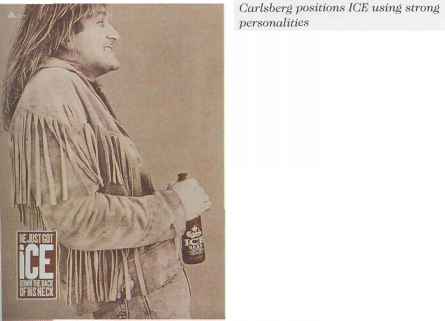
Defining the Competitors Defining the competition is not a trivial task, since perceptual mapping is about how consumers see markets and this may differ from the map maker's view. For instance, the Range Rover is a four-wheel-drive cross-country vehicle, yet research shows that customers see it as an alternative to a Volvo, large BMW or Mercedes-Benz, or even a Porsche or Rolls Royce.
One way of defining competitors is to look at consumers' consideration set. For consumer non-durables, customers are asked what other brands they considered in their buying process. This could show the present tendency for customers to buy soda water and tonic water - traditionally mixers - as an alternative to mineral water or other soft drinks A more exhaustive way of mapping product markets uses a series of interviews. {1} Start by asking respondents the use context of a product - say, a low-alcohol lager. (2) For each use context identified - such as the lunch-time snack or at a bar - respondents identify all alternative drinks. (3) For each drink identified, the respondent has to identify an appropriate use context. The process continues until there is a full list of contexts and drinks. (4) A second group of respondents then judges how appropriate each drink would be for each usage situation. If both low-alcohol lager and coke were appropriate for a company lunch-time snack, but inappropriate for an evening meal, they are direct competitors.
The Competitive Dimensions Kelly grids are a popular market research technique that identifies the dimensions underlying a market. (1) Give respondents three stimuli (say. Pepsi Max, Schweppes Soda Water and Perrier)
and ask them to state which two are alike but unlike the third. 'Tonic water and Perrier are alike but different from Pepsi Max' could be the answer. (2) Ask how tonic water and Perrier are alike. The answer could be: 'low calorie and natural'. These factors are labelled the emergent pole. 'Youthful' could be the answer to the question why Pepsi Max is different from the other two. That answer is the implicit pole. (3) Sort the stimuli (Pepsi Max, Schweppes Soda Water, Perrier and other drinks) equally between the two poles. (4) Select another three stimuli and repeat the process until the respondents can think of no new reasons whv the triad are alike or dissimilar.
Determine the Competitors'Positions It is an odd feature of many of the techniques used in positioning research that the competitors' positions appear before understanding how customers differentiate between them. For example, in similarities-based multidimensional scaling, respondents sort a stack of cards that contain pairs of competing products: for instance, card one could read 'Pepsi Max and Coca-Cola'; card two, Terrier and 7-Up'; card three, 'Pepsi Max and Dr Pepper', and so on. Then ask the respondents to rank the pairs according to their similarity, the pair most alike on the top and the pair most unalike on the bottom. Since this can be a rather cumbersome process, it is best first to ask respondents to stack the cards into three piles representing those pairs that arc very similar, those pairs that are very unalike and a middling group, The respondents then rank the pairs within each group.
The objective is to develop a plot of the stimuli (drinks) that shows those that people saw as similar close together and those that respondents said were dissimilar far apart. Although this is a difficult task to conduct manually, computers are adept at finding solutions and there are many computer packages that can be used, KYST produces perceptual maps from the similarities matrix provided and many sorts of data. Figure 1 shows Pepsi Max and Coca-Cola positioned well
Building Perceptual Maps of Markets
Ttie most important part of perceptual mapping is collecting the right data in the right way, This marketing highlight takes you through the stages of data collection and introduces ways of making perceptual maps.
Marketing
Highlight
10.2
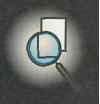
away from the economic drink, tap water. Noticeably. Perrier has also distanced itself from tap water, hence its premium price.
Adding Competitive Dimensions and Customers
To find out how the dimensions fit the perceptual map, respondents rate each drink on the basis of the attributes identified. The result is another series of matrices that are difficult to analyze manually, and again, computers must come to our aid: in this case, a package called PREFMAP takes the perceptual map of product positions and fits the dimensions as they best describe the respondents' perceptions. A two-stage process adds customer positions to the drinks map. First, respondents rate the drinks on their preference. Cluster analysis then segments those respondents with similar preferences (see Marketing Highlight 9.4 to find out about this), which indicates the presence of three main clusters. Analysis of their demographic characteristics shows these clusters to be: young professionals, who found Perricr and Schweppes most attractive; family buyers, who preferred own brands; and teenagers, attracted by Pepsi Max and Coke.
Again. PREFMAP can locate these segments on the product map.
Alternative Ways of Mapping In developing positioning maps, researchers are spoilt for choice by the number of approaches available. PREFMAP can combine the identification of the perceptual map of product positions and underlying dimensions. This program would require respondents to rate drinks along each of the dimensions, such as 'exciting' or 'natural', and would then involve aggregating the results to arrive directly at a map. Correspondence analysis is another method that is now widely acclaimed by practitioners. It is popular because it makes maps using cross-tabulated data that often already exist.
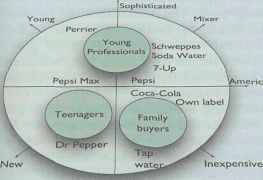
Figure 1 Perceptual map of soft drinks shcwing COMEm-nON ö/M&VSZONß .AM) custowir positions
|burcBS; This highlight draws mainly from Graham Hooley anil John Saunders, Competitive Positioning: The key to market success (Heme! Hempstead Prentice Hall, 1993). See also John Saunders arid Ann Watt, 'Do brand names differentiate identical industrial products''', Industrial Marketing Management i S, 2 (1979), 114-33; Tony Lewin, 'Rebirth of the Range Rover', The European (30 Septemher-6 October 1994), p. 23; (VS. Bay. A.D. Shocker and R.K Srivastava, 'Customer oriented approach to identifying product markets', Journal of Marketing, 43, 4 (1979), pp. S-19; Peter Sampson, 'Qualitative research and motivational research', in Robert M. Worcester and John Downham teds.I Consumer Marketing Research ihiniiiioak (London; McGrawgfcll, 1986), pp. 29-55, P.E. Green! F.J. Carmone and S.M. Smith, Multidimensional Sealing: Concepts and applications (London: Allyn and 15 a eon, 1989); J B. Kruskal, F.W. Young and J.B. Seery, 'Dow to use KYST; a flexible programme to do multidimensional sealing' (Multidimensional Sealing Package of Bell Labs; Murry Hill, NJ, 1973); J.J. Chang and J.D. Carol, 'How to use PREFMAP and PREFMAP 2: progrmrS which relate preference data to multidimensional scaling solutions' (Murry Hill, NJ: Multidimensional Scaling Package of Bell Labs, 1972); Graham Sooley and Michael K. Hussev, 'Quantitative methods in marketing: the multivariate jungle revisited -introduction and overview to special edition'. Journal of Marketing Management, 10, 1-3 (1994), pp. 3-12.; J.J. Ghaftg and J.D. Carol, 'How to use MDPREF: a computer program for multidimensional analysis of preference data' (Murry llill, NJ: Multidimensional Sealing Package of Bell Labs, 1969); Donna Hoffman and George F. Franke, 'Correspondence analysis: graphical presentation of categorical information in. marketing research', Journal of Marketing Research, 23 (August 1986), pp. 213-27; S.M. Smith, PC-MDS Version 5-1i Multidimensional statistics package (Prova, UT. Rngftaui Voting University, 1990).
Xylitol Jenkki Xylifresh, probably 'the world's most researched chewing gum', has been used as a reference standard by medical schools measuring dental hygiene. T.EAF's other functional gums include BenBits ExtraFresh and Fresh 4 Ever breath fresheners, and vitamin-enriched E.Z.C- Its sugar-bused confectionery includes vitamin-enriched +Energi and Liikerol throat soother.
Usage occasions position many products. Mentadcnt Night Action toothpaste, for instance, is for evening use. Tn the summer, Gatorade is positioned as a drink for replacing athletes' body fluids; in the winter, it can be positioned as the drink to use when the doctor recommends plency of liquids. KitKat and After Eight mints sell alongside Snickers and Ferrero Rocher, but the positioning is on usage occasion. Internationally, KitKat means 'Have a break', while After Eight is an after-dinner mint to share.
Red Bull, a soft drink made by a small Austrian company, is a huge success in Germany and is rolling out across Europe. According to its sales director; 'We don't want to be compared with the soft drink market. Of course, Red Bull has quite a key position in the market, hut it is mainly a sports drink.' Red Bull's origin is in die huge Japanese market for energy drinks. Each can has 80 milligrams of caffeine, a third more than the equivalent amount of Coca-Cola. This has made the drink popular with teetotaller young ravers who can consume several cans a night.15
L'ser.s help position products. Johnson & Johnson improved the market share for its baby shampoo from 3 per cent to 14 per cent by repositioning the product towards a new user category of adults who wash their hair frequently and need a gentle shampoo. Often products are positioned by associating them with their user class. Nescafe Gold Blend increased sales dramatically after showing a series of ads romancing thirty somethings, as did Tango soft drinks as a result of the youthful 'You've been Tangoed' campaign. Woolworth's gives its products credibility among teenagers by using and promoting successful young people as models -Sega champion Karl Roberts; rapper and dance champion Jermaine Emmanuel; mountain bike champion Zoe Read.
Activities are often used to sell expensive products. The Geneva-based SMH group positions its watches using sports. Thus Rado has come to specialize in tennis, Omega in sailing and aerospace, 'the first and only watch on the moon', and Longines in skiing and aviation.16 This positioning activity goes beyond advertising and promotions. Rolex positions its watches using adventurers and back this with its Sfr450,000 Awards for Enterprise. Over 30 people are Rolex Laureate for their original and creative schemes.17
Personalities often help positioning. Prestigious brands are often positioned using successful personalities who can add to a product's character. American Express runs ads showing caricatures of famous businesspeople who are also users; Jameson Irish Whiskey uses sportsmen in its positioning; and Hugo Boss identifies successful people as models in its 'Men at Work' campaign.18
Nike started 1900 as the third-place sports shoe after Reebok and Adidas but grew to no. 1 with 32 per cent market share by associating its products with the basketball star Miehael Jordan, Tiger Woods and other famous sports personalities. After losing market leadership to Nike, Reebok aped Nike's position by spending $400 million on sports sponsorship against Nike's $1 billion. It failed. With a market share down to IS per cent in 1998, Reebok backed off sports sponsorship. We don't
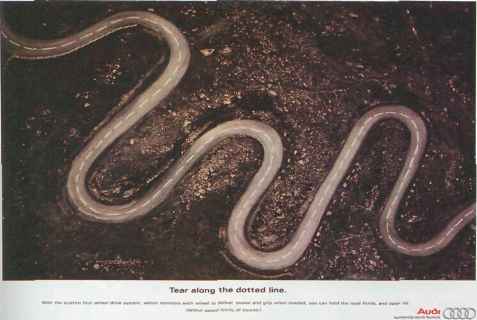
- Audi ad positions the produce explaining their car's performance and it being of German origin.
want to compete head-on with Nike anymore. They'll do their thing and we'll do ours,' said Reebok's Paul Fireman. 'Getting stars to endorse products has been a priority for the past three years, and hasn't given us much of a payback.' Reebok will concentrate on older consumers, who are less susceptible to fashion and star endorsements. It will back away from Nike's dominant position in basketball and cross training shoes to focus on its traditional strengths in running and walking. 'We're the tortoise, not the hare/ explained Fireman,1"
Origin positions product by association with its place of manufacture. Much of Pcrrier's success depended on the sophistication its French origin gave to it. Similarly, Audi's "Vorsprung durch Technik' positioned its cars as German. Drinks are often positioned using origin. Foster's and Gastlemaine XXXX lagers' positioning uses their Australian heritage, plus masculine humour to reinforce their character. The strategy also works at a local level. Bocldingtons was a local Manchester beer that was not in the United Kingdom's top ten sellers. Then, in 1992 it was relaunched with a campaign using Manchester people and a setting that played upon the creamy froth on the product. Plays on ice cream, face eream, smooth, rich cream helped to make the product the top take-home beer.
Other brandy can help position products. Glinique's advertising for its 'skin supplies for men' prominently features a Rolex watch. Where firms have tra-ditioiifilly crafted products, such as Wilkinson's Sword or Holland & Holland shotguns, these lend glamour to more recent products - in these instances, shaving products and men's clothing respectively. After Volkswagen bought the Czech Skoda company, it used the Volkswagen name to transfer some of its strong reputation to Skoda. 'Volkswagen were so impressed, they bought the company' ran one press ad. The responsible ad agency, (U.IK, explains: The Volkswagen connection hit the spot. People immediately latched on to it. It allowed susceptible people [who might be persuaded to buy a Skoda j a route into the brand.' Dealers reported 50 per cent sales increases.2"
The Ruhr's advertising positions it against the competition at [he heart of Europe.
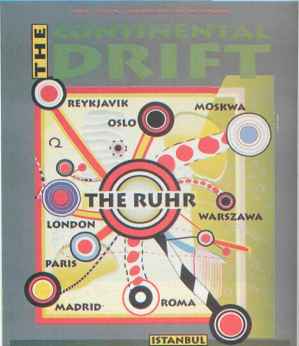
Competitors provide two positioning alternatives. A product can be positioned directly against a competitor. For example, in ads for their personal computers, Compaq and Tandy have directly compared their products with IBM personal computers. The direct-sell ing computer company dan compares its performance with all other suppliers: '1st in repurchase intention, 1st in repair satisfaction', and so on. In its famous 'We're number two, so we try harder1 campaign, Avis successfully positioned itself against the larger Hertz. A product may also be positioned away from competitors - 7-Up became the no. 3 soft drink when it was positioned as the 'Uncola', the fresh and thirst-quenching alternative to Coke and Pepsi. River Island Expeditions positions its holidays, its adventures for travellers, away from package holidays and the tourists who go on them. It says: 'The traveller is active; he goes strenuously in search of people, of adventure, of experience. The tourist is passive; expects interesting things to happen to him. He goes " sight -seeing'" (Daniel J. Boorstin, 1962).
Product class membership is die final means of positioning. For example, Van Den Bergh's I Can't Believe It's Not Butter is clearly positioned against butter, while other yellow fats are promoted as cooking oils. Camay hand soap is positioned with bath oils rather than with soap. Marketers often use a combination of these positioning strategies. Johnson & Johnson's Affinity shampoo is positioned as a hair conditioner for women over 40 (product class and user). And in its Christmas campaigns, Martell cognac and Glenlivet malt whisky both neglect the lucrative 18- to 35-year olds to concentrate on the over-35s (usage situation and user).
" youAREnotBORNwith good TASTE, you DEVELOP IT"
terenceeohran

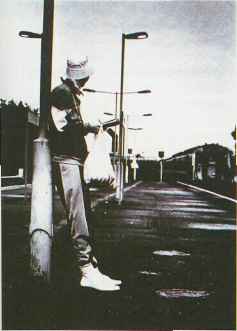
Guinness' stark advertising emphasises )'c,s unique position in [he marketplace.
© Guinness Ltd. All rights reserved
Choosing and Implementing
Continue reading here: Defining Customer Value and Satisfaction
Was this article helpful?
Readers' Questions
-
awate5 months ago
- Reply
-
neftalem12 months ago
- Reply
-
Berilac1 year ago
- Reply
-
LUIGIA1 year ago
- Reply
-
Amber1 year ago
- Reply
-
Antje1 year ago
- Reply
-
BRUNO MCINTOSH1 year ago
- Reply
-
AMETHYST1 year ago
- Reply
-
ayden sinclair1 year ago
- Reply
-
Miia1 year ago
- Reply
-
maurilio barese1 year ago
- Reply
-
savannah1 year ago
- Reply
-
Kalevi Roivas1 year ago
- Reply
-
FRANCIS1 year ago
- Reply
-
kidane1 year ago
- Reply
-
Beato1 year ago
- Reply
-
nico gibson1 year ago
- Reply